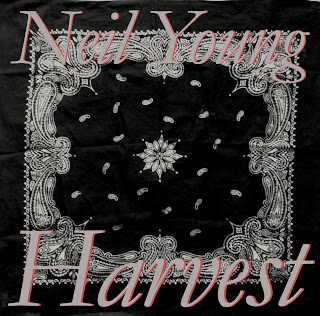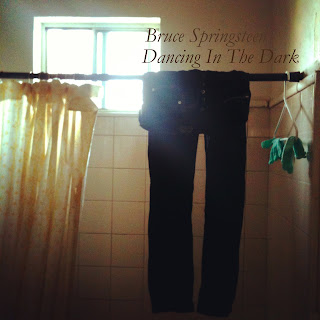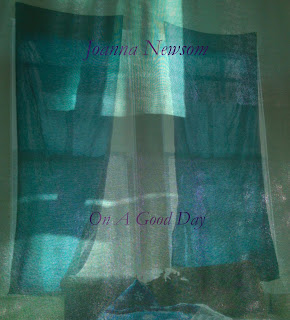Thursday, June 28, 2012
Monday, June 18, 2012
Wednesday, March 21, 2012
Neil Young - Harvest

Harvest may have been the first album I was listening to that my mom recognized. It was before I could drive, so she drove me everywhere. As we were riding, I inserted it into the car stereo. She said, “Oh, Neil Young!” and I said, “You mean, you know this?” I couldn’t believe my mom had listened to such a cool album. Only later did I realize that literally every person has heard Harvest. It has the sort of instant accesability paired with an aching gravitas that artists spend long hours trying to pull off. Which is the thing. The album was recorded so spontaneously in Nashville that, at least as far as I’m concerned, it was either going to bomb or it was going to kill. And boy did it kill! Some of Neil Young’s most ubiquitous songs are presented on Harvest.
The thing that gets me with Harvest is this: it does not try hard to be beautiful. Beauty, as I understand it, comes at a premium when one begins to struggle for it in their work. There is the constant battle to hide edges, to remove traces of effort, to downplay details that seem unconcerned with the final product. But all you get in the end is something that has fingerprints all over it. But you listen to Neil Young, and he puts down to tape what is going on for him at the moment, and the beauty is immediate. It is both raw and refined. At any rate, though Harvest is actually quite a hodge-podge of recordings, including a live track from a solo performance, it conveys itself in a way that makes you want to hear every song over and over and over. Which is what I did for quite a long time.
There is one song, though, that took longer to hit than the others. The title track. I find its beauty in the melody and the way the lyrics never quite articulate anything other than a sort of complicated frustration. It is the kind of waltz I expect to hear resonating in the floorboards of some old dancehall in Texas. Yet, the song maintains a loneliness that never really allows this image to be fulfilled. He sings with a stoicism that, rather than conceals, exposes an ocean of feeling underneath the otherwise static arrangement. I lifted the rhythm section out of my interpretation to give it a little more buoyancy, and I added some omnichord to taste.
Monday, March 5, 2012
Dancing In The Dark

My first introduction to Bruce Springsteen occurred in 2009, while living with my best friend. He was and probably still is an avid fan. For him, the boss’ best material exists on Born To Run. I still remember him singing (and Springsteen’s singing is more like yelling) along to “tenth avenue freezeout” while we would get ready to go to a bar or a party. I didn’t get it.
One day, about a year later, the track “Born to Run” came on my itunes. It was a revelation. The boss understands urgency as I experience it in my darkest moments, but also in my most excited states. He communicates it as I feel it: that the moment of utter desperation is also the moment of greatest power, because it’s at that point that you have nothing left to lose. I think back to my friend singing along while we got ready to go to the bar, and it is not so hard to understand why Springsteen is the perfect soundtrack to a fresh night.
I immediately related to his hope that there exists a life beyond what is handed down to us by blood or circumstance or both. Bruce’s characters are more than a little paranoid, but they are also tragically acquiescent. At some point shortly after this, I heard “Dancing In The Dark” for the first time. Rather, I watched it – the music video for the song is actually a live performance from 1984, featuring a cameo by a young Courteney Cox at the end. Never has loneliness looked so exciting. I blame bruce’s dancing for this.
This song excites the part of me that envisions myself as a daring yet average, powerful yet sad guy – someone who would take his life into his own hands if there were only enough time after the shift ended. The video (and the original recording) interprets the song as a celebration of loneliness. I found a lot of territory left to explore once I got over the Boss’ bravado and the sheer 80’s-ness of it.
Wednesday, February 29, 2012
Joanna Newsom - On A Good Day

“On A Good Day” is one small song within a larger chronicle of songs that describe the complexity of Joanna Newsom’s relationship and break-up with a lover. It is the most concise song on Have One On Me, instrumentally and structurally; at under 2 minutes, the song is communicated almost as a sketch. When I first heard it, I thought the song was a breath of fresh air, sandwiched as it is between songs that clock in at over 9 and 7 miniutes, respectively.
Joanna Newsom’s delivery is never flat, either as a vocalist or as a harpist, but on this track she does not exaggerate her phrasing so much, which leaves the interpretive possibilites more wide open for me as a listener. I find the prettiness to be the easiest thing to take away from this song after a cursory listen, yet it is not why I keep coming back to it: I am drawn to her bitterness and anger at her lover, her resignation to continuing a project in which she longer wants a part, her sense of feeling silenced by someone else’s priorities and her sense of feeling alone in that.
I suppose I could write even more about why I would find these things to be compelling. Suffice it to say I find the self-awareness with which she suffers to be both universal and utterly intimate. Where the original recording is a whisper into someone’s ear, I wanted my interpretation to be a shout into the dark.
Monday, February 27, 2012
John Prine - Angel From Montgomery

I was not ready for John Prine when I first heard his song “Sam Stone” in high school. I would imagine that its content is over the heads of even the least ripped high school seniors. It certainly flew over mine. I took it to be another stoner’s anthem, a song to wear your scars to. As such, it didn’t really interest me. And since I was only into Zeppelin and Kanye’s first album at the time, I didn’t explore prine’s catalogue any further.
In 2010, the mentor of a close friend of mine passed away. It was an unexpected, sad, and unfair death. At the funeral, my friend played “angel from montgomery.” I did not attend, nor had I heard the song at that point, but the title stuck in my head. It was a strange image, and I built up certain expectations for the song – that it was about a lovely woman from montgomery, or something along those lines.
Of course, then I heard the song, and my expectations were shattered. The song is indeed about a woman, but a woman who wants to die out of sheer boredom, disappointed with where her life has taken her. It is a very sad song. Yet the old woman’s nostalgia and bitterness have been ground down and refined into a diamond-hard will to live in spite of wanting to die. I found it interesting that John Prine took on the personality of an old woman so well. He does it so casually that you don’t even think how weird the whole idea is.
As someone who has grown up listening to ’90s country arrangements, I am generally quick to dismiss the static, down-tempo, steel-guitar-laden recordings that characterize so much of country music. However, only the right side of my car stereo works, and listening in mono on my cassette stereo that day, I only got some guitar, drums, piano, and vocals. The recording feels like it was captured in a dusty corner of the house that is being described within the song. I don’t even know if this is the whole mix, but I loved it – full yet lean.
I wanted for my interpretation to preserve the spareness that I first perceived. I love John Prine’s biting vocal timbre, and I felt it would be just as exciting to lose some of the more conventional arrangement choices and let the structure speak for itself.
